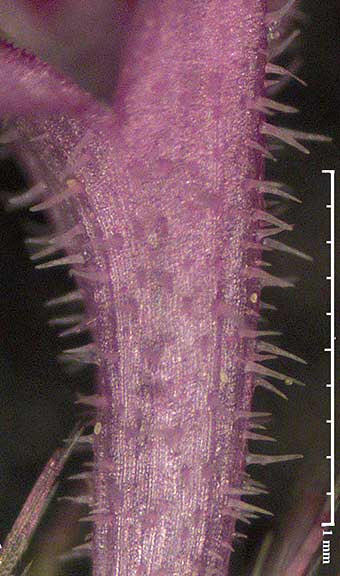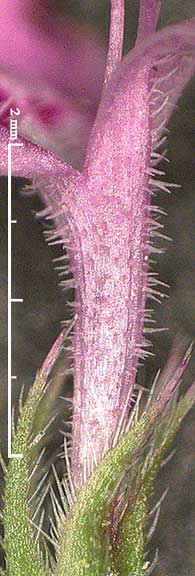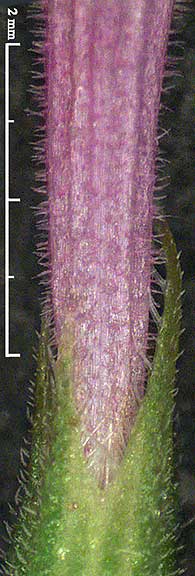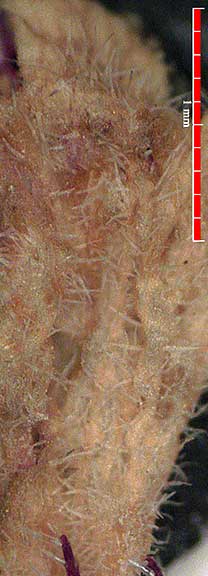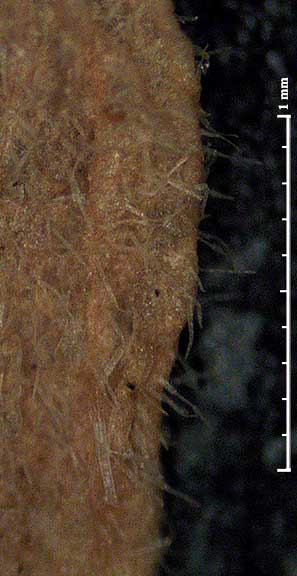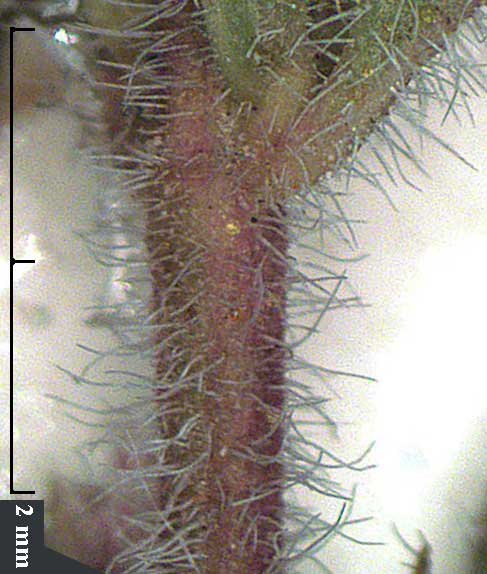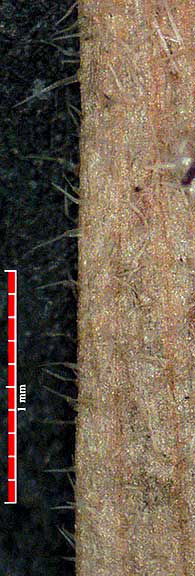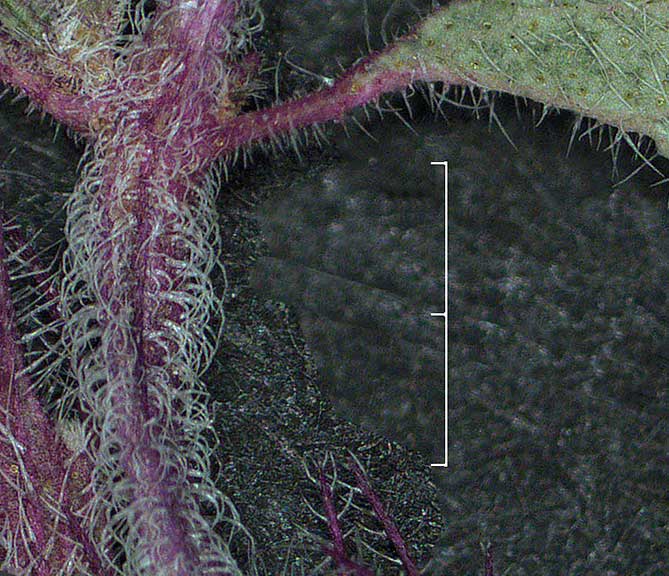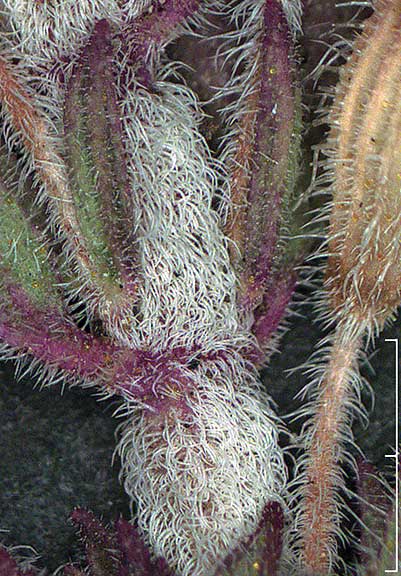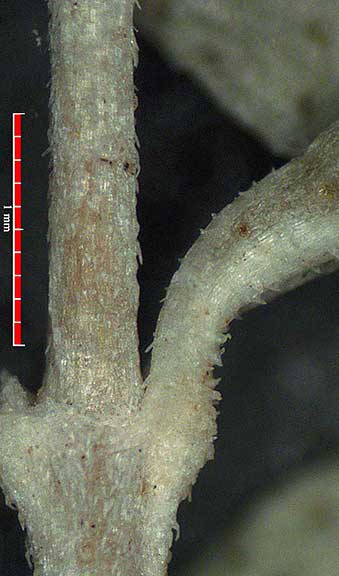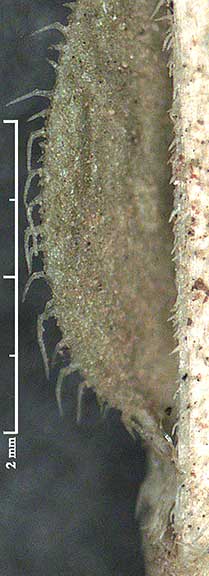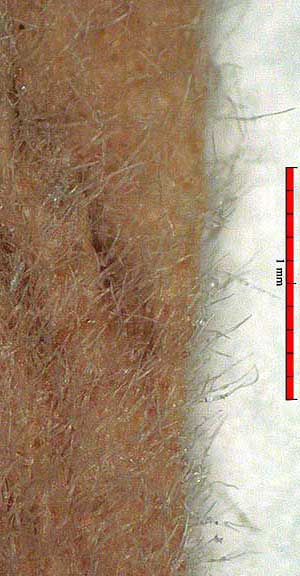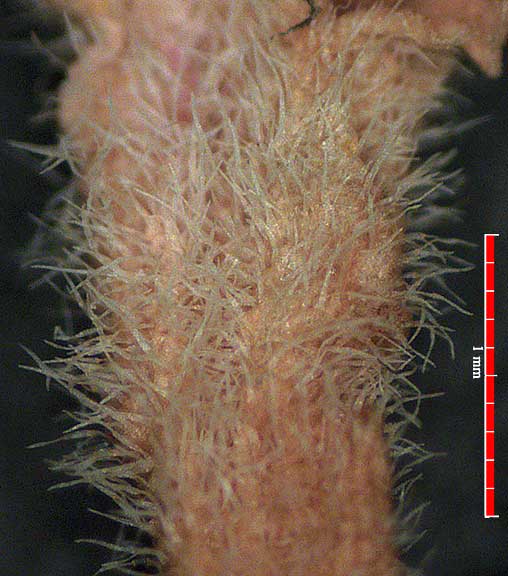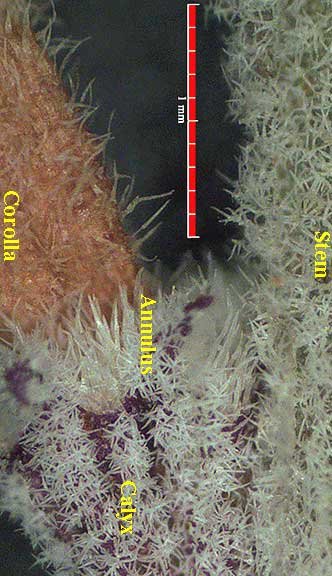Trichomes of Other Texas Hedeoma Taxa
by Bob Harms

For all taxa, the trichomes of the corolla outer surface were different from those on other surfaces (i.e., stem, petiole, leaf, bracteole, calyx). Among the taxa these trichomes differ in shape, length, orientation and density.
Comparison with Hedeoma acinoides
H. acinoides corolla trichomes (center 2 images below) are slightly broader, more triangular and not quite as dense as those of the H. drummondii complex, somewhat longer than those of H. drummondii (far right), but the differences are minor. In general the vestiture patterns of H. acinoides are similar to those of the three taxa of the H. drummondii complex.
Hedeoma hispida
H. hispida is similar to H. acinoides, but with the exception of the stem hairs, has relatively weak, more sparse pubescence. The smallest hairs were difficult to image.
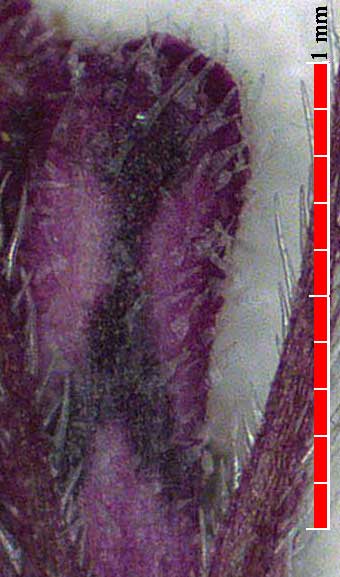
relatively sparse corolla hairs
(along with calyx teeth) |

dense sharply bent stem hairs |
Hedeoma nana
H. nana corolla hairs are short, fine, relatively sparse and not erect (in contrast with H. drummondii's complex hairs). Most distinctive are the stem and petiole hairs, which are essentially the same, both fine, long and spreading outward, not crowded — the only Texas taxon with this type of summer vestiture.
Hedeoma costata
H. costata corolla hairs are sparse, fine, relatively straight and spreading, with an acicular terminal cell similar to that of H. reverchonii. The stem hairs are slender and smoothly curved (not angular) downward, while petiole and leaf hairs are similar to the corolla hairs, although a bit longer and slightly more dense.
Hedeoma plicata
H. plicata corolla hairs are relatively broad, somewhat more dense, crowded on the veins, appressed and directed upward. Stem hairs are quite crowded and curved downward; petiole hairs are similar, but not as dense. Petiole and leaf edge hairs are more outward spreading or very slightly directed upward.
Hedeoma apiculata
H. apiculata corolla hairs are not crowded and spreading or directed upward. Stem hairs are short and sparsely distributed, sharply directed downward, almost appressed. Petiole hairs are very short, generally too short to discern a direction. Hairs of the leaf edge are longer and sharply bent downward just below the mid point, a unique characteristic among Texas Hedeoma.
Hedeoma mollis
H. mollis pubescence is unique among Texas taxa. It has only 3 types of vestiture: (1) fine, spreading trichomes of the corolla, abundant but not crowded; (2) dense straight trichomes of the calyx annulus, typical for this structure, but shorter and more exserted than for the H. drummondii complex; (3) everything else (i.e., stems, peduncles, pedicels, petioles, leaves, bracteoles, calyx tube, calyx teeth) is densely covered with branching trichomes — and although variation in density occurs, it does not seem to be determined by anatomy.
Plant Resources Center Home Page — Flora of Texas
— Hedeoma




